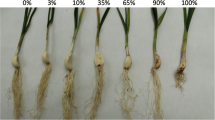Abstract
Husk spot, caused by Pseudocercospora macadamiae is amajor fungal disease of macadamia in Australia. Chemicals to control the disease are limited and frequent failure to control the disease is a major concern to growers. The overall goal of this research was to improve the chemical control strategy of P. macadamiae through the provision of fungicides with different modes of action to carbendazim, which is the current industry standard. Husk spot incidence, premature fruit abscission, kernel quality and yield were evaluated following application of different fungicide products in replicated field experiments at three different sites. Results showed significant differences in disease incidence and premature fruit abscission between fungicide treatments, field sites and years. Generally, disease incidence and premature fruit abscission on trees treated with fungicide were significantly (P < 0.05) lower than the untreated control. Pyraclostrobin conferred significantly better protection than trifloxystrobin, reducing disease severity by 70% compared with a 50% reduction by trifloxystrobin. The pyraclostrobin treatment had a similar efficacy to the current industry standard (70% reduction cf. 73% reduction by tank-mixed carbendazim and copper). Higher amounts of immature kernels occurred in the untreated control, followed by difenoconazole and trifloxystrobin. Diseased fruit accounted for 78% of premature fruit abscission, which indicates that husk spot enhances fruit abscission in macadamia. Our results suggest that pyraclostrobin provided similar efficacy to the industry standard and could, therefore, play a key role in the management of husk spot.
Similar content being viewed by others
References
Akinsanmi OA, Miles AK, Drenth A (2007) Timing of fungicide application for control of husk spot caused by Pseudocercospora macadamiae in Macadamia. Plant Disease 91, 1675–1681. doi: 10.1094/PDIS-91-12-1675
Australian Pesticides and Veterinary Medicines Authority (2006) Manual of requirements and guidelines: agricultural applications. Australian Pesticides and Veterinary Medicines Authority, Kingston, ACT, Australia. Available at http://www.apvma.gov.au/MORAG_ag/vol_5/ag_labelling_code.html [Verified 4 January 2008]
Bartlett DW, Clough JM, Godwin JR, Hall AA, Hamer M, Parr-Dobrzanski B (2002) The strobilurin fungicides. Pest Management Science 58, 649–662. doi: 10.1002/ps.520
Beilharz V, Mayers PE, Pascoe IG (2003) Pseudocercospora macadamiae sp. nov., the cause of husk spot of macadamia. Australasian Plant Pathology 32, 279–282. doi: 10.1071/AP03018
Bubici G, Amenduni M, Colella C, D’Amico M, Cirulli M (2006) Efficacy of acibenzolar-S-methyl and two strobilurins, azoxystrobin and trifloxystrobin, for the control of corky root of tomato and verticillium wilt of eggplant. Crop Protection 25, 814–820. doi: 10.1016/j. cropro.2005.06.008
Jones K (2004) Industry development manager (IDM) Report September 2004. Australian Macadamia Society News Bulletin 31, 37–40.
Karaoglanidis GS, Bardas G (2006) Control of benzimidazole-and DMI-resistant strains of Cercospora beticola with strobilurin fungicides. Plant Disease 90, 419–424. doi: 10.1094/PD-90-0419
Karaoglanidis GS, Karadimos DA (2006) Efficacy of strobilurins and mixtures with DMI fungicides in controlling powdery mildew in field-grown sugar beet. Crop Protection 25, 977–983. doi:10.1016/j. cropro.2006.01.005
Leskovar DI, Kolenda K (2002) Strobilurin plus acibenzolar-S-methyl controls white rust without inducing leaf chlorosis in spinach. Annals of Applied Biology 140, 171–175. doi: 10.1111/j.1744-7348.2002. tb00170.x
Mason RL, Wills RBH (1983) Evaluation of the use of specific gravity as an objective index of the quality of Australian macadamia nuts. Food Technology in Australia 35, 245–248.
Mayers PE (1998) Epidemiology and control of husk spot of macadamia. Australian Macadamia Society News Bulletin 25, 59–64.
Mayers PE, Giles JE (2001) Macadamia husk spot disease tolerance — a win for growers, consumers and the environment. Australian Macadamia Society News Bulletin 28, 35–37.
Meredith DS (1970) ‘Banana leaf spot disease (Sigatoka) caused by Mycosphaerella musicola Leach.’ (Commonwealth Agricultural Bureaux: Kew)
Mourichon X, Fullerton RA (1990) Geographical distribution of the two species Mycosphaerella musicola Leach (Cercospora musae) and M. fijiensis Morelet (C. fijiensis), respectively, agents of Sigatoka disease and Black Leaf Streak disease in bananas and plantains. Fruits 45, 213–218.
Reuveni M (2000) Efficacy of trifloxystrobin (Flint), a new strobilurin fungicide, in controlling powdery mildews on apple, mango and nectarine, and rust on prune trees. Crop Protection 19, 335–341. doi: 10.1016/S0261-2194(00)00026-0
Reuveni M (2001) Activity of trifloxystrobin against powdery and downy mildew diseases of grapevines. Canadian Journal of Plant Pathology 23, 52–59.
Stephenson RA, Gallagher EC (1986) Effects of temperature during latter stages of nut development on growth and quality of macadamia nuts. Scientia Horticulturae 30, 219–225. doi:10.1016/0304-4238(86)90100-7
Stephenson RA, Gallagher EC (1987) Effects of temperature, tree water status and relative humidity on premature nut drop from macadamia. Scientia Horticulturae 33, 113–121. doi: 10.1016/0304-4238(87)90037-9
Stover RH (1962) Intercontinental spread of the banana leaf spot (Mycosphaerella musicola Leach). Tropical Agriculture 39, 327–337.
Tobin ME, Koehler AE, Sugihara RT, Ueunten GR, Yamaguchi AM (1993) Effects of trapping on rat populations and subsequent damage and yields of macadamia nuts. Crop Protection 12, 243–248. doi: 10.1016/0261-2194(93)90041-G
Tobin ME, Koehler AE, Sugihara RT (1997) Effects of simulated rat damage on yields of macadamia trees. Crop Protection 16, 203–208. doi: 10.1016/ S0261-2194(96)00105-6
Trueman SJ, Turnbull CGN (1994) Fruit set, abscission and dry matter accumulation on girdled branches of macadamia. Annals of Botany 74, 667–674. doi: 10.1006/anbo.1994.1169
Author information
Authors and Affiliations
Corresponding author
Rights and permissions
About this article
Cite this article
Akinsanmi, O.A., Miles, A.K. & Drenth, A. Alternative fungicides for controlling husk spot caused by Pseudocercospora macadamiae in macadamia. Australasian Plant Pathology 37, 141–147 (2008). https://doi.org/10.1071/AP08001
Received:
Accepted:
Issue Date:
DOI: https://doi.org/10.1071/AP08001




